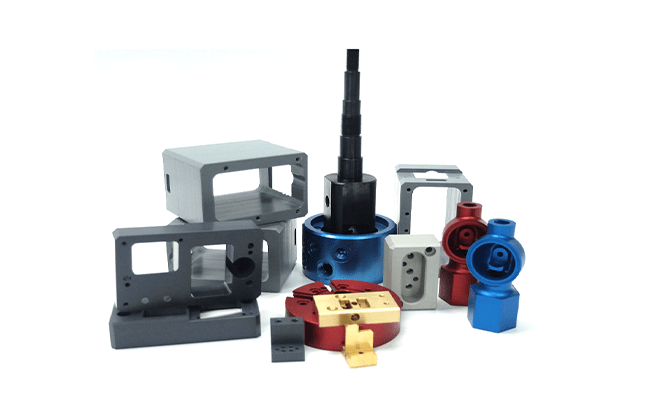CNC Machining
CNC machining is a machining process in which machines carve a solid piece of raw material into a desired 3D geometrical shape and size using a controlled material removal process. This process relies heavily upon the use of machine tools and power and hand tools.
10+ Years in the Industry
100+ Projects Delivered
Fast Turnaround
We have worked with some high-profile clients and have successfully delivered 100+ projects all these years. These projects and experiences gained from them have not only helped us win repetitive projects, but also immense client support, which keeps us going.
What is CNC Machining?
CNC machining is a machining process in which machines carve a solid piece of raw material into a desired 3D geometrical shape and size using a controlled material removal process. This process relies heavily upon the use of machine tools and power and hand tools.
The application of Computer Numerical Control (CNC) matches the need of the modern industry. CNC uses computers to control the movement and operation of mills, lathes, and other cutting machines. However, subtractive manufacturing is broadly adapted to manufacture metal products, wood, plastic, ceramic, and composites materials.
Historically, the subtractive machining process was manual. Processes such as woodcarving, forging, and filling of metals, once done by hand, have undergone rapid advancements over the past century and now broadly incorporate technology that makes them more efficient and precise. The automated nature of CNC machining makes it possible to create simple, high-precision parts with high accuracy; and to fabricate unique, medium-scale production series cost-effectively.
What are the main steps of CNC machining?
While the CNC machining process offers a variety of operations and capabilities, the fundamental principles of the method remain largely the same. The main steps of CNC machining are as follows:
01. CAD model designing
The CNC machining process begins with creating a 2D vector or 3D Computer-Aided Design (CAD) of a solid part. This can be done either in-house or by a CAD/CAM (Computer-Aided Manufacturing) design service company. CAD software allows designers and manufacturers to make a model or render their parts. They can design their products according to customized technical specifications, such as dimensions and geometries.
Once the CAD design is complete, the designer exports it to a CNC-compatible file format, such as STEP or IGES
02. CAD file conversion
The formatted CAD design file passes through software, usually a CAM, to extract the part's geometry and generate the digital programming code. It will give commands to the CNC machine and manipulate the tooling to produce the custom-designed part.
Numerically controlled machines use several languages, but the best known of the CNC is the general or geometric code, called G-code. This controls when, where, and how the machine tools move. For example, when to start or stop, how fast to get to a particular point, which paths to take, etc.
Once the CNC program is generated, the operator loads it onto the CNC machine.

03. Machine configuration
Before the operator executes the CNC program, he must prepare the CNC tool. These steps include:
fixing the part directly in the machine, on its spindles, or in its clamps;
attaching the necessary tooling, such as drills and cutters, to the appropriate machine components.
The operator can run the CNC program once the machine is fully set up.
04. Machining operation execution
The formatted CAD design file passes through software, usually a CAM, to extract the part's geometry and generate the digital programming code. It will give commands to the CNC machine and manipulate the tooling to produce the custom-designed part.
Numerically controlled machines use several languages, but the best known of the CNC is the general or geometric code, called G-code. This controls when, where, and how the machine tools move. For example, when to start or stop, how fast to get to a particular point, which paths to take, etc.
Once the CNC program is generated, the operator loads it onto the CNC machine.
Our Equipment
Main processing materials: imported domestic carbon steel, die steel, manganese steel, alloy steel, tool steel, high-speed steel, 304, 316, 303, 400 series stainless steel, aluminum alloy, copper, iron, aluminum parts, ABS, organic glass, PC, POM, PVC, PP, nylon, Bakelite-plastic, Teflon, PEEK, PI, PAI and all other kinds of materials.
We are ready to provide service for customers at any time.
If you are interested in our products, or have any ideas, please feel free to contact us.
FAQ
Are you a trade company or manufacturer?
We are a manufacturer with more than 10 years of experience in CNC machining and sheet metal fabrication.
What's kinds of information you need for quotation?
VMT: You can provide 2D/3D drawing (PDF/DXF/STEP/IGES etc) including material/surface treatment or send your sample to our factory, then we can also make it according to your sample.
Can you protective my business, will my drawing be safe after you get it?
Yes, we can sign the NDA before you send the drawing.
NAVIGATION
